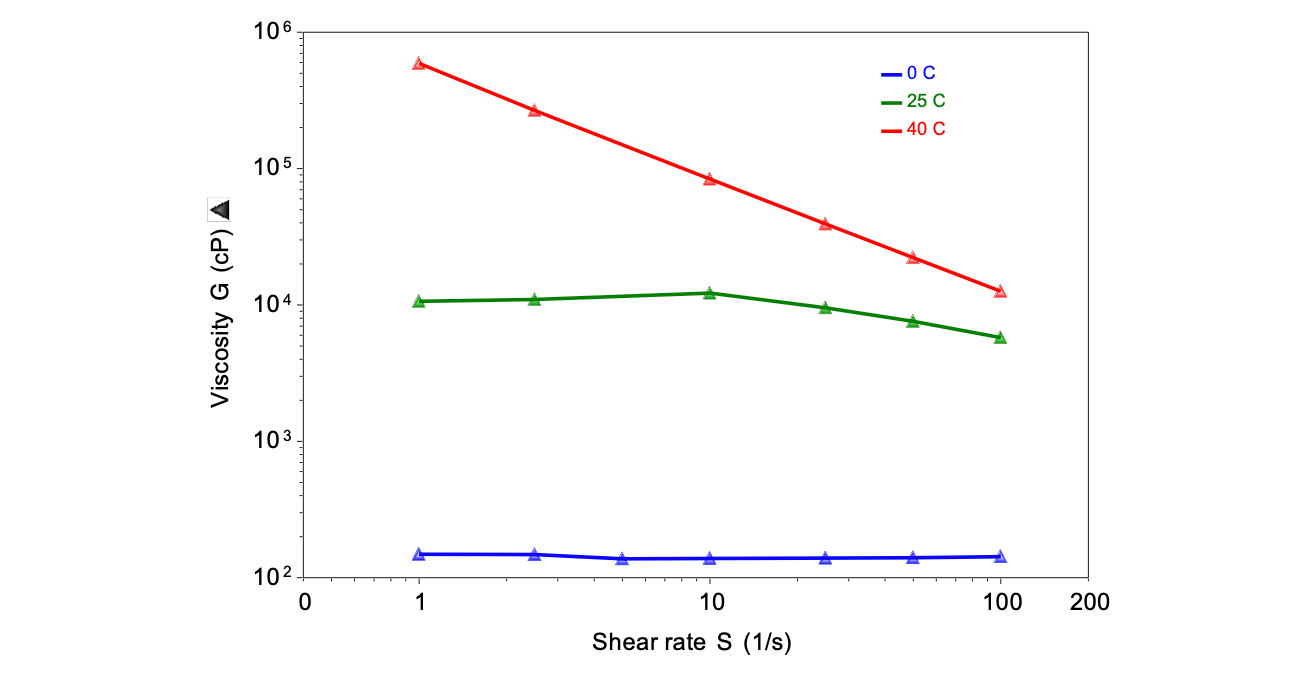Poloxamers are interesting Polymers
The title of this post may sound like a tongue twister, but it is not.

Poloxamers, or Pluronics, are a very interesting category of soluble polymers. They are interesting for several reasons: they are soluble in water and saline solution; they are biocompatible, thus being useful in biomedical applications; they have a very peculiar thermal behavior, which is the subject of this post.
Poloxamers are block copolymers which consist of hydrophilic poly(ethylene oxide) (PEO) and hydrophobic poly(propylene oxide) (PPO), arranged in an A-B-A triblock structure. What makes them interesting from a biomedical point of view is the fact that, unlike other physical gels as collagen, Poloxamers have a reversible gelation transition making them liquid-like at low temperatures and solid-like at high temperatures.
Therefore when the Poloxamers solution is below the transition temperature, which can be tuned by choosing the proper concentration, it is liquid and can be injected or poured or even 3D printed on a surface. By heating it up, either with a heater or by our body heat, the solution will turn into a gel, making it suitable for several different medical applications [1-3]. The best approach to study the changes in the visco-elastic properties of Poloxamers solutions is to use a rotational rheometer. Such an instrument can easily assess the liquid- and solid-like behavior of the solution and, being capable of accurately controlling the test temperature, can study the transition between the two states.
The following data were obtained on a commercial Poloxamers solution (Pluronic F127) at 10% w/w concentration. The tests were performed with a Rotational Rheometer HR20 from TA Instruments. As the sample is very sensitive to temperature changes and gradient, the rheometer is equipped with a Peltier-controlled plate on both the lower and the upper geometry, for the best control. The geometry was a 25mm parallel plate.
In figure 1 we can see the viscosity measured at different temperatures. It is very evident that the sample have a rather Newtonian behavior at the two lowest temperatures, while it shows a typical slope of -1 at 0 degrees, as it is a gel below its yield stress, at the highest. At intermediate temperature the behavior is still almost Newtonian (apart from a small shear thinning effect at high shear rates).
The same trend can be seen under a frequency sweep test. Here we can observe the changes over temperature with greater detail. At the lowest temperature, the solution has an almost Newtonian behavior, with G’’ prevailing over G’.
Getting closer to the transition temperature, the solution has a visco-elastic behavior, with a detectable relaxation time when the two moduli cross over that gets higher and higher as the gel-like structure develops with temperature.
Above the transition, the behavior is typical of a soft gel, with G’ greater than G’’ and the two moduli never crossing each other (infinite relaxation time). They do show a slope, that means the gel network is not continuous across the sample.
Figure 3 shows the most interesting test: a temperature ramp to show the liquid – gel transition. The sample starts as a liquid at low temperatures, then both moduli start to grow until G’ surpasses G’’ and the solution turns into a gel. This transition is fully reversible, making this material pretty suitable even for advanced applications as 3D printing of bone and skin grafts.
Bibliography
[1] A. A. Koffi et al., European Journal of Pharmaceutics and Biopharmaceutics, 69, (2008) 167-175
[2] S. Yasuda et al., Nature, 436 (2005)
[3] H. Qi et al., Int. J. Pharm. 337 (2007) 178-187

1 Flow Curves at different temperatures

2 Frequency sweeps at different temperatures

3 Temperature ramp